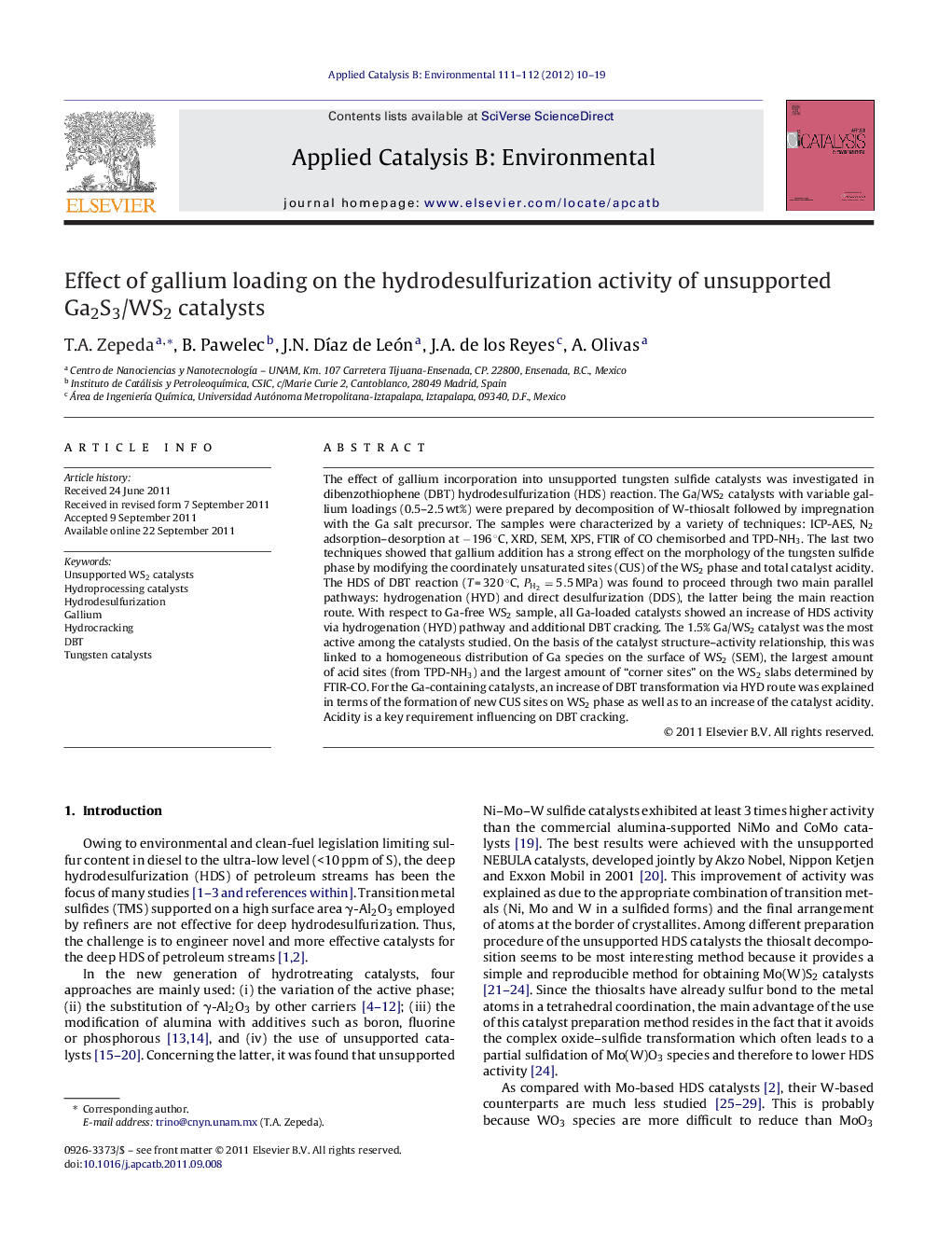| Article ID | Journal | Published Year | Pages | File Type |
|---|---|---|---|---|
| 46444 | Applied Catalysis B: Environmental | 2012 | 10 Pages |
The effect of gallium incorporation into unsupported tungsten sulfide catalysts was investigated in dibenzothiophene (DBT) hydrodesulfurization (HDS) reaction. The Ga/WS2 catalysts with variable gallium loadings (0.5–2.5 wt%) were prepared by decomposition of W-thiosalt followed by impregnation with the Ga salt precursor. The samples were characterized by a variety of techniques: ICP-AES, N2 adsorption–desorption at −196 °C, XRD, SEM, XPS, FTIR of CO chemisorbed and TPD-NH3. The last two techniques showed that gallium addition has a strong effect on the morphology of the tungsten sulfide phase by modifying the coordinately unsaturated sites (CUS) of the WS2 phase and total catalyst acidity. The HDS of DBT reaction (T = 320 °C, PH2=5.5 MPaPH2=5.5 MPa) was found to proceed through two main parallel pathways: hydrogenation (HYD) and direct desulfurization (DDS), the latter being the main reaction route. With respect to Ga-free WS2 sample, all Ga-loaded catalysts showed an increase of HDS activity via hydrogenation (HYD) pathway and additional DBT cracking. The 1.5% Ga/WS2 catalyst was the most active among the catalysts studied. On the basis of the catalyst structure–activity relationship, this was linked to a homogeneous distribution of Ga species on the surface of WS2 (SEM), the largest amount of acid sites (from TPD-NH3) and the largest amount of “corner sites” on the WS2 slabs determined by FTIR-CO. For the Ga-containing catalysts, an increase of DBT transformation via HYD route was explained in terms of the formation of new CUS sites on WS2 phase as well as to an increase of the catalyst acidity. Acidity is a key requirement influencing on DBT cracking.
Graphical abstractThe gallium addition has a strong effect on the morphology of the tungsten sulfide phase by modifying the coordinately unsaturated sites (CUS) of the WS2 phase and total catalyst acidity. Ga-loaded catalysts showed an increase of HDS activity via hydrogenation (HYD) pathway and additional DBT cracking.Figure optionsDownload full-size imageDownload as PowerPoint slideHighlights► Ga addition has a strong effect on CU sites of the WS2 phase and total catalyst acidity. ► Ga incorporation enhanced the HYD route of HDS of DBT reaction and DBT cracking. ► Ga addition increment the amount of “corner sites” on the WS2 slabs.
